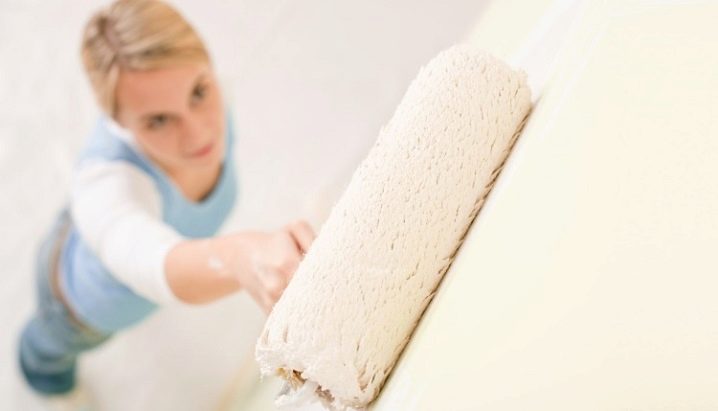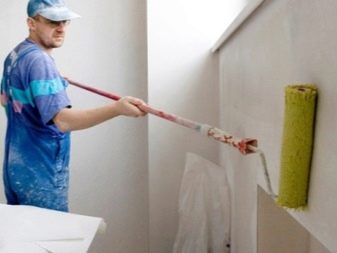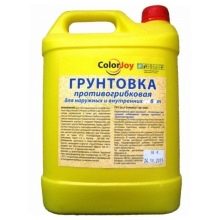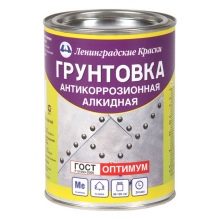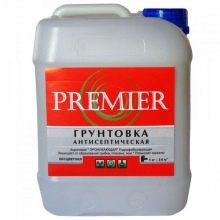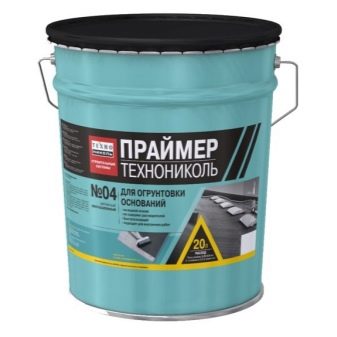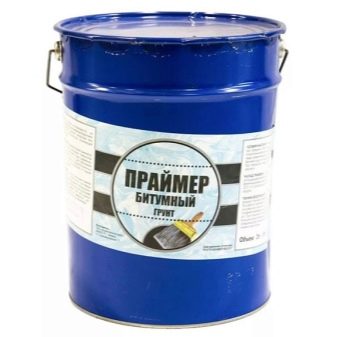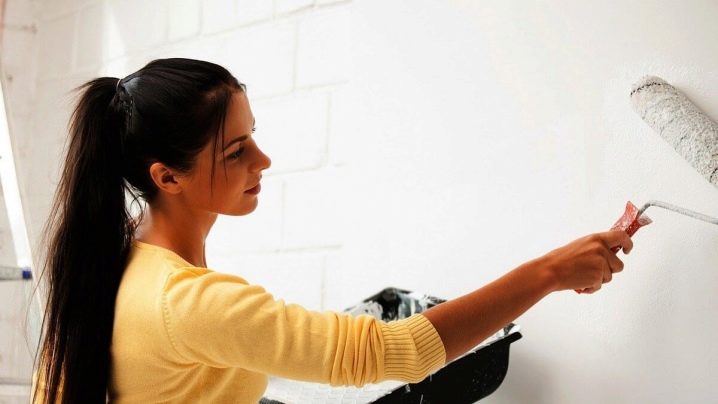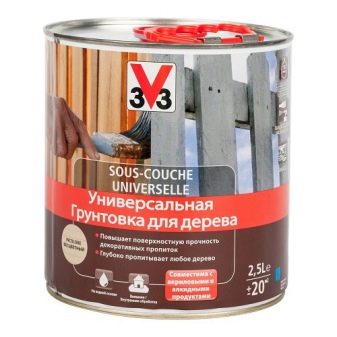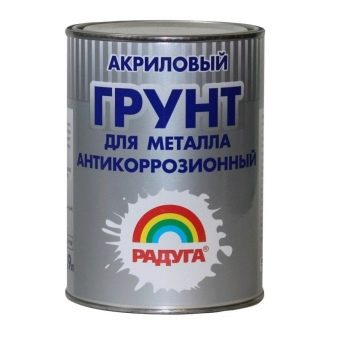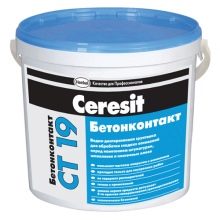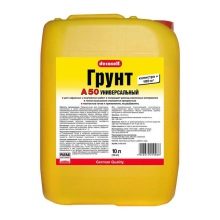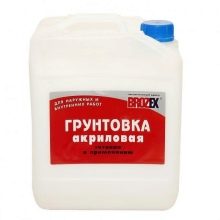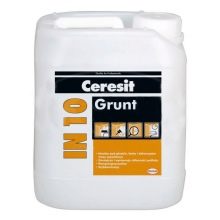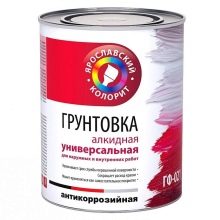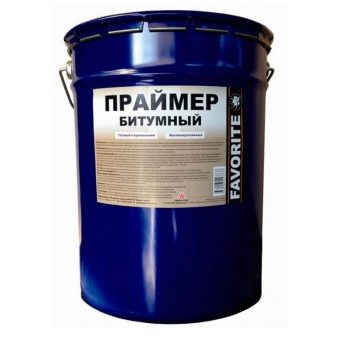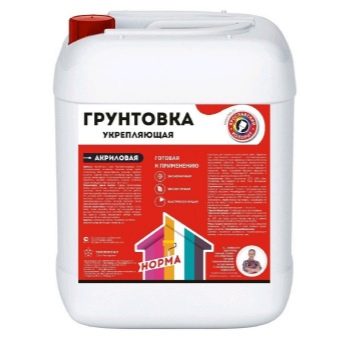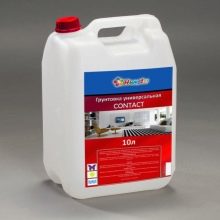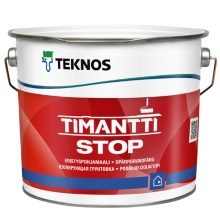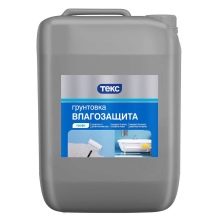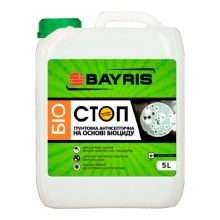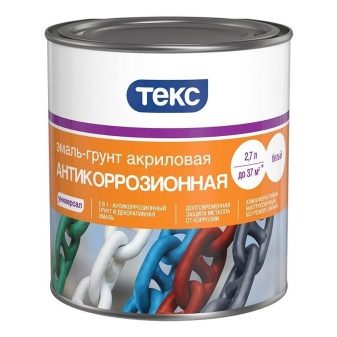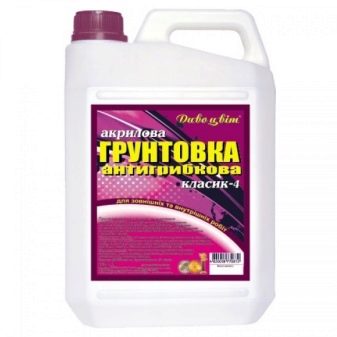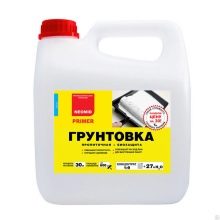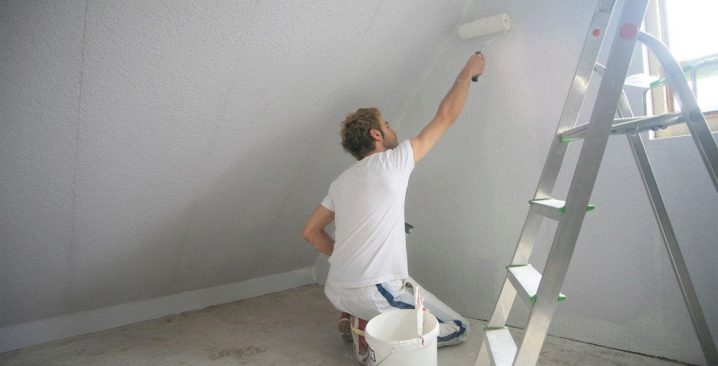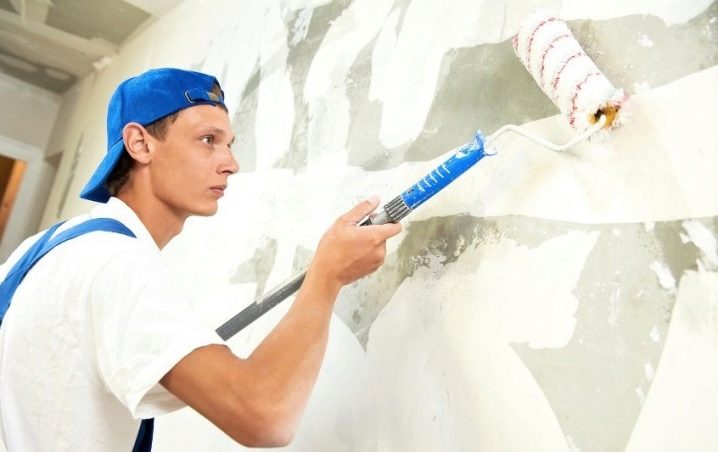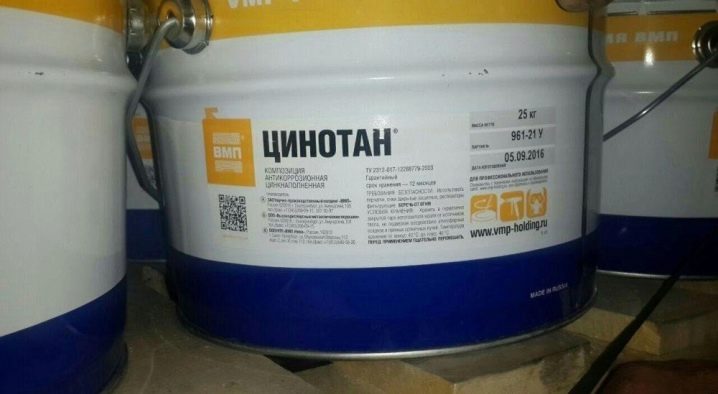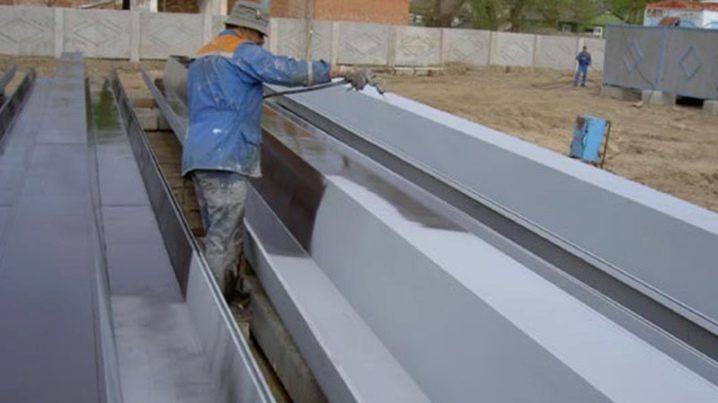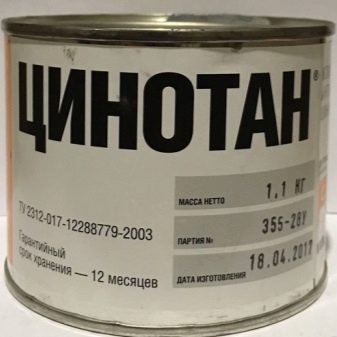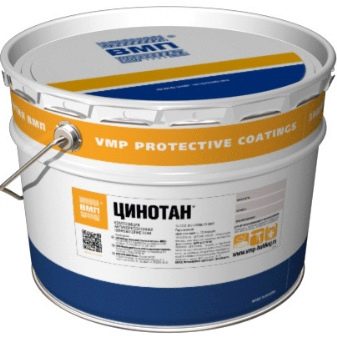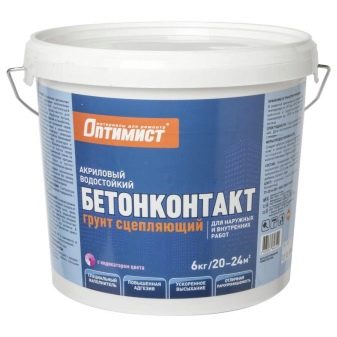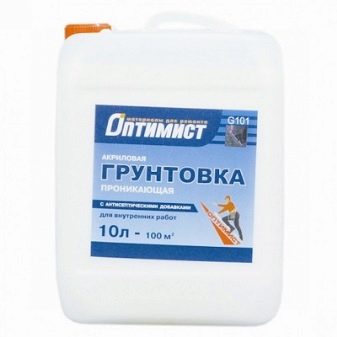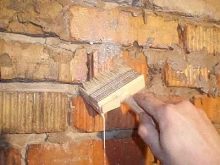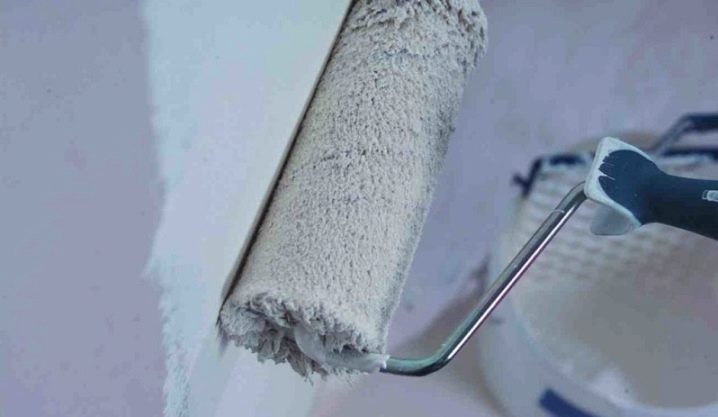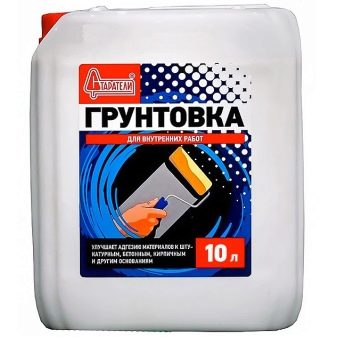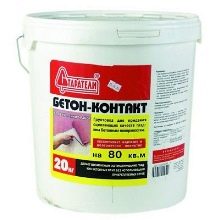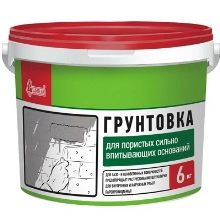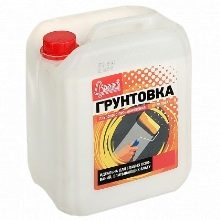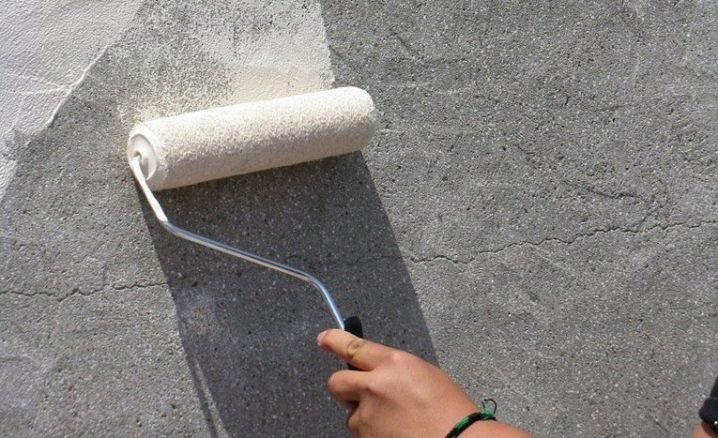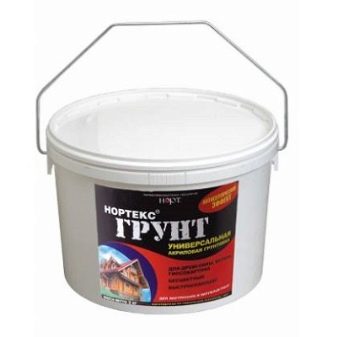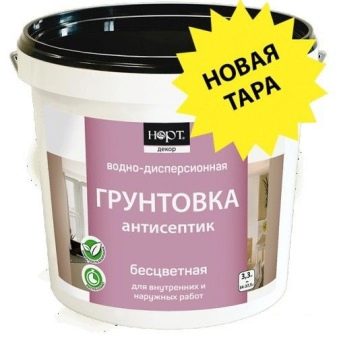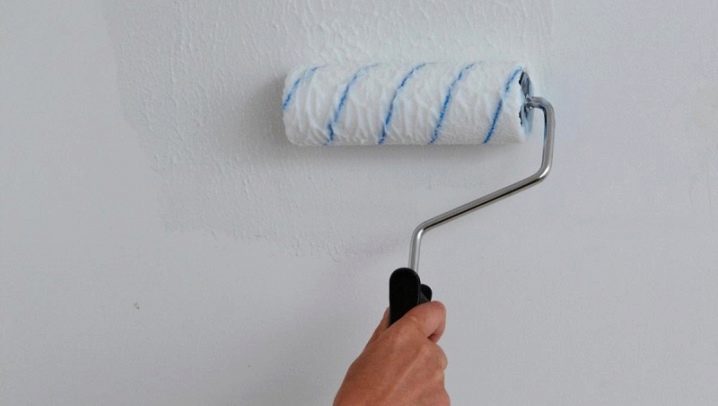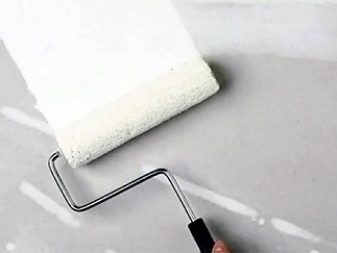What is the consumption of primer per 1 m2 of wall?
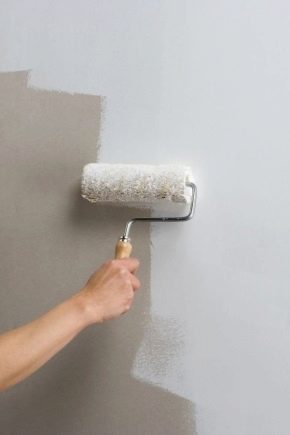
Coloring of various surfaces - one of the key moments of any repair. Priming mixtures provide a smooth coating and allow the paint to last longer, so it is very important to comply with all the nuances of applying a primer. And the most important is the correct calculation of the consumption of the primer. If you are not a professional, this article will help you understand everything.
What is it for?
The primer is called a special binder material that is applied to the working surface. It penetrates deep into the base, fixes it, it can be said, glues the coated working surface (adhesive property).
Soil is applied before the subsequent repair work, such as putty, plaster, painting, wallpapering, pouring of the self-leveling floor. Due to this, paint, plaster, tile, wallpaper firmly held on the plane. Before you begin to ground, you need to decide for what purposes it is needed, what tasks you need to perform, and only after that you can choose the composition and type depending on the tasks.
Types of soil
Types of soil are very diverse, they have different characteristics, qualities and, accordingly, purpose. For example, insulating create a thin layer between the working surface and the subsequent layer. Anti-corrosion inhibit surface oxidation. Antiseptic and anti-fungal contain special antibacterial and anti-mycotic additives, which, in turn, prevent the development of mold and fungus.
They are used in rooms with a high degree of humidity, for example, in a bathroom, in basements and similar places.
The composition of concrete primers includes elements that create a rough layer. This contributes to a better adhesion of a dense and smooth working surface (for example, concrete) and finishing materials. There is also a universal type - this is a composition with deep penetration, it creates an excellent protective layer. There are still specific types, for example, with the function of electrical conductivity, they are used to create special electrically conductive layers, if you need to glue any electrically conductive material.
The electrical resistance of such a primer layer is of the order of 305 ohms.
There is also a bituminous primer or, as it is also called, a primer. It is used where good waterproofing, good coupling, dedusting is required. Such characteristics are necessary, for example, to repair the roof. They are mainly suitable for exterior applications, but some manufacturers produce water-based primers that do not contain solvents and can be used for interior repairs. There are still dry or liquid formulations, and they can also have a different consistency.
Primers vary by:
- composition;
- penetration rates;
- purpose;
- place of use;
- properties.
And they can consist of natural and synthetic components. The composition depends on what surface they are intended for.
There are the following types of surfaces:
- wooden;
- metal;
- concrete;
- plaster;
- universal.
The composition is divided into:
- acrylic (suitable for consumption of drywall);
- mineral;
- alkyd;
- glyphthalic;
- phosphate;
- quartz;
- bituminous;
- other
According to the degree of penetration can be divided into:
- ordinary;
- deep penetration.
At the place of use are divided into:
- primers for exterior walls;
- for interior walls;
- universal.
If classified by properties, here you can highlight:
- insulating;
- moisture resistant;
- antiseptic;
- anti-corrosion;
- antifungal;
- fireproof;
- other types.
Consumption rate
Material consumption per 1 square meter of the wall depends on the type of surface on which it is applied. Consumption will be different for different walls, floors, ceilings, etc., and, accordingly, will depend on the primer itself. It should be understood that one of the main criteria for choosing a tool will be the surface structure. Porous require a mixture with a high degree of adhesiveness (adhesion) and a high degree of penetration.
On average, 1 kg of primer is used per 1 m2.
When applying the primer, you need to consider how many layers will need to be applied. Usually put 2-3 layers. If the wall is of medium porosity, then a universal primer will do. It is also necessary to consider future facing material. Thus, it will be possible to calculate the required amount of the composition.
The first step is, of course, to be guided by the manufacturer’s instructions. It usually indicates for which surfaces the composition is suitable, how it should be applied and what the flow rate will be.
To determine the amount of soil you need to take into account the following factors:
- surface types;
- manufacturer requirement;
- type of building materials;
- application technique (roller or spray);
- the number of layers required;
On average, the consumption of soil per 1 square. m. (in liters) for different primers looks like this:
Deep penetration | Alkyd | Bituminous | Perchlorvinyl | Acrylic |
| 80-160 | 100-130 | 200-1000 | 600-100 | 120-180 |
Manufacturers Overview
"Zinotan"
Zinc rich polyurethane anti-corrosive primer. This product is more professional than amateur and will be used as corrosion protection in an aggressive environment for metal, mainly in various industrial enterprises. The coating is resistant to various petroleum products, to a polluted atmosphere, to water (including sea). It is used for corrosion protection of bridges, as well as in the chemical industry, in metallurgy, in the oil and gas industry. It can also be used as an independent coating, and not only as a primer. The temperature range at which it can be applied is from -15 oC to +40 oC with humidity from 30% to 98%.
Advantages:
- durability;
- resistance to aggressive environment for metal;
- all season application;
- recommended for use of the OCRC and included in the regulatory documents of various industries;
- dries quickly (within 2 hours) even at a humidity of about 65-70%;
- heat resistance - up to 120 oC;
- compatibility with primers on epoxy, polyurethane, acrylic and vinyl bases;
- used in large organizations.
Disadvantages:
- during application, degreasing and dust removal are required, as well as the removal of rust, scale and old paint traces, which is not always possible;
- when applying several layers, you will have to wait until the previous layer is completely dry, and this is a waste of time;
- It is necessary to avoid prolonged contact of the composition in a container with air and direct sunlight, which is also not always convenient;
- not very convenient and the fact that the exposure time of the coating before the start of operation in aggressive media is 7 days;
- the mixture is flammable, during its operation it is necessary to observe precautionary measures, as it belongs to the IV class of danger;
- high consumption per 1m2 - about 190-380 g.
"Optimist"
A group of companies producing paintwork and decorative coatings. GC "Optimist" - a few brands. Directly to the brand "Optimist" are three types of primers. This is one of the most popular compositions today.
- Betocontact - used for enhanced adhesion, contains quartz filler, which provides the necessary surface roughness. It is suitable for outdoor and indoor use.
- "Primer for deep penetration" divided into two types - only for interior work and for exterior and interior work.
- "Acrylic primer" also divided into exterior and interior.
- Is there some more "Concentrated soil 1:10"It is designed for use in rooms with a high level of humidity, as well as for waterproofing walls made of concrete, brick and similar materials.
All of them are used to process drywall, concrete, brick, wood, cement plaster and other surfaces. Suitable for all types of surfaces. They create a transparent film (except for “Concrete Contact”), which protects from environmental exposure and helps to reduce the consumption of paints and varnishes.
Possess high adhesion (adhesive) qualities.
In general, the advantages of all primers include:
- anti-corrosion properties;
- antibacterial and antimycotic properties (well suited to protect the tree from mold and fungi);
- alignment of surfaces, which allows you to apply subsequent tools more smoothly and economically;
- high bonding and penetrating qualities;
- fast drying - from 2 to 6 hours depending on the working surface;
- non-toxicity;
- impact resistance;
- resistance to chemical reagents;
- do not change the color of the main coating after application;
- profitability;
- suitable for a large number of surfaces;
- high penetrating and fastening ability;
- ease of application;
- small consumption - 110-250 ml / m2.
Disadvantages:
- unpleasant smell;
- small warranty period of storage - 1 year.
"Miners"
Russian manufacturer of building materials. This is a Russian company that produces a large range of primers and other building materials.
At the moment there are 5 types of primers in the assortment of this company.
- "Primer for interior work" provide excellent adhesion of the applied compositions. It can be applied to drywall, foam and aerated concrete, solid concrete, in general, on any dense, poorly absorbent surface, as well as on porous surfaces.
- Primer "Universal" It is universal, as the name implies, and meets the basic criteria for this type. This composition is well suited for both porous surfaces and for smooth ones, since it contains sand, which makes the surface roughened. This composition has antiseptic and high penetrating characteristics and does not yet create a film on the surface.
- "Primer deep penetration" gives enhanced strength to surfaces, it can be applied to concrete, aerated concrete, any fragile surfaces.
- "Primer for porous, highly absorbent bases" differs from others in that it dries longer than the others - approximately 4-6 hours. Its consumption is 0.3-0.4 kg / m2.
- Primer "Concrete Contact" - means for imparting adhesion qualities to smooth concrete surfaces. Consumption - 0.2-0.3 kg / m2, dries for 2-3 hours.
In general, the advantages of all products of this company include:
- drying speed (approximately 1 hour, with the exception of two types);
- profitability (consumption of 100-200 ml per 1m2);
- high adhesive ability of the composition;
- antiseptic and antibacterial properties;
- lack of smell;
- suitable for all surfaces (except specialized types).
The disadvantages include a small storage period of the container (no more than 1 year).
"North"
North Company is a Russian manufacturer producing high quality paintwork and fire-protective materials.
In particular, this manufacturer has “Northtex Soil” and “North Primer-antiseptic” in the assortment. "North Primer antiseptic", compared with "Norteks Soil", is characterized by higher antiseptic characteristics, it not only destroys fungus and mold, but also prevents its reappearance.
Both compositions are water-based and designed to treat virtually any surface. The soil is characterized by high adhesion, which prolongs the service life of the painted surface, it also has the ability to level the surface, as it contains polymer particles. This ability is well suited for painting, because it saves paint and allows you to apply it in a more even layer.
The advantages of this product:
- has good antiseptic properties;
- suitable for all kinds of surfaces;
- possesses adhesive properties;
- levels the surface for painting;
- has a longer storage period compared to other manufacturers - 2 years;
- it has a low consumption - 60-120 g / m2;
- suitable for outdoor and indoor use;
- ecologically safe;
- Easy to apply.
The disadvantages include all those aspects that are characteristic of acrylic primers, as well as the fact that they cannot be applied to ferrous metals as a protective coating.
You can learn how to prime the walls before painting with your own hands from the video below.
